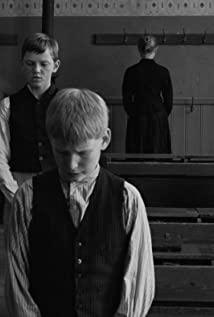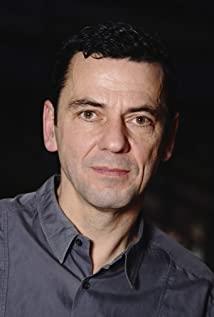The surprising thing about "Wendini" is that in 2020 we can still see such a mythical and allegorical movie. Especially in Europe, with the continuous changes in the political situation in recent years, the political tendency in film creation has been deepening, especially in 2019, a time node known as the "Year of Street Protesters". The European art films of 2009 have taken political issues as the theme and purpose, such as "Pain and Glory" which explores body politics, "Young Ahmed" about Islamic issues, "Synonyms" about immigrant identity, and feminist films. "Burning Girl" and other works. On the contrary, World War II and post-war themes, which had previously occupied an important theme in European art films, were temporarily overshadowed by the limelight. Even with excellent works such as "The Tall Man", they were still mainly chosen to discuss issues such as feminism. Theme fusion.
"Wendini" is also a film work focusing on the present, but director Petzold did not choose to focus on the current social issues as an entry point and focus, but looked back. He chose the fairy in medieval myths and legends as an important motif of the film, and used the emotions of modern men and women to expose the historical scars hidden behind the current Berlin, and form a mutual referential relationship with the mythological motif. Wendine is a fairy of water in legend, very similar to the sea monster in Greek legend, she attracts young men and falls in love with them, and at the same time punishes men's betrayal. The heroine Wentini in the film is deliberately regarded as the incarnation of the elf Wendini, because the director deliberately omitted her origin and simplified her social relationships to a great extent. In the film, Christopher woke up and went to find Wentini. But Tini was told by her colleagues that no one knew where Wentini went, that she was only a temporary worker, and her home was just a short-term rental apartment. Such a mysterious background is very much in line with the setting of the legendary characters, and it also happens to be in line with the current situation that contemporary young people are often alone in the city and their connections with each other are very fragile. As an important element of the fairy Wendini, water, is also an important element that the director chooses to use to shape the characters. Wentini's current boyfriend Christopher is a diver in a suburban reservoir. The important scene of their meeting is a coffee shop. After the explosion of the huge fish tank, the water rushed through the two. At that moment, Wentini, who had resisted each other, suddenly changed her attitude and accepted each other. . Not to mention several important passages in the film, which are like bridges in the story of Wendini in mythology. Wentini, who thought her boyfriend would never wake up, chose to take revenge on her ex-boyfriend in grief, and the scene of revenge was very strange. When she knocked into the swimming pool and surfaced in front of her ex-boyfriend, she killed her with a blank face. When facing the other party, it was like the presence of Wendini, the fairy who punished the heartless in myth. And her ending is to walk into the reservoir and commit suicide, just like the mythical Wentini, and finally return to the water, which is why Christopher "saw" Wentini's water ghost-like image when she dived underwater.
As one of the important creators of the Berlin School, Petzold still does not lose the original intention of the school in his latest work "Wendini". In the form of myth and fable, what he wants to express is still after World War II until the reunification of Germany. The wounds of the East German people behind the seemingly consummation. In the film, Wentini's most important or only role, whose background is blurred, is a historian, who is responsible for explaining the history of the city of Berlin. There are two very important explanations. The first one is the origin of Berlin explained after being abandoned by her ex-boyfriend. After this explanation, she has a new relationship. The second place is the "Humboldt Forum" that I didn't know about when I was in love with Christopher, and behind this building symbolizes a history where the traces of East Germany in Berlin were asked to be erased. And these two explanations are also related to Wentini's emotional changes. In the first presentation, Christopher was not shown as a tourist, but the latter said he had listened to the presentation. The most important part of this explanation is that Wentini invites tourists to identify the origin of the city of Berlin on the map. This place is also the cafe where she broke up with her ex-boyfriend and where she and Christopher fell in love. When she was practicing the "Humboldt Forum" related commentary, Christopher refused her intimacy and asked to listen to the commentary, and encountered an accident after returning to the reservoir. Christopher and his ex-boyfriend John Nash can actually be seen as East and West Germany, while the water spirit represented by Wendini is another incarnation of Berlin. Her choices and behaviors represent the director's tendencies and attitudes. After the war, Berlin was divided into two parts, part of which could be said to be abandoned by West Germany, but at the same time it had a new home - East Germany. Whereas the socialist state is reduced to the relatively modest-looking male figure from the suburbs, capitalism is the masculine figure who dresses and behaves wildly. But after the reunification of the two Germanys, East Germany was swallowed up by West Germany, and its traces were obliterated, just like the history of the nine years of the red envelope theory. In the film, it is precisely because of John Nash and Wendini's encounter that Christopher discovered and quarreled with Wendini. Even though this part was told that it did not exist, it was indeed true in Wendini's experience.
So Wentini killed the so-called culprit, John Nash, and took her own life, "in exchange" for Christopher's awakening. This is also a beautiful vision of the director. He not only pays attention to the trauma of the East German people, but also makes a little change in history in the world of the film, so that the incarnation of East Germany can survive and the incarnation of West Germany can end. This approach is the same as Quentin's "Once Upon a Time in Hollywood" is exactly the same, all filmmakers use the identity of the film as a dream to change the regret that cannot be changed in reality.
View more about Undine reviews











